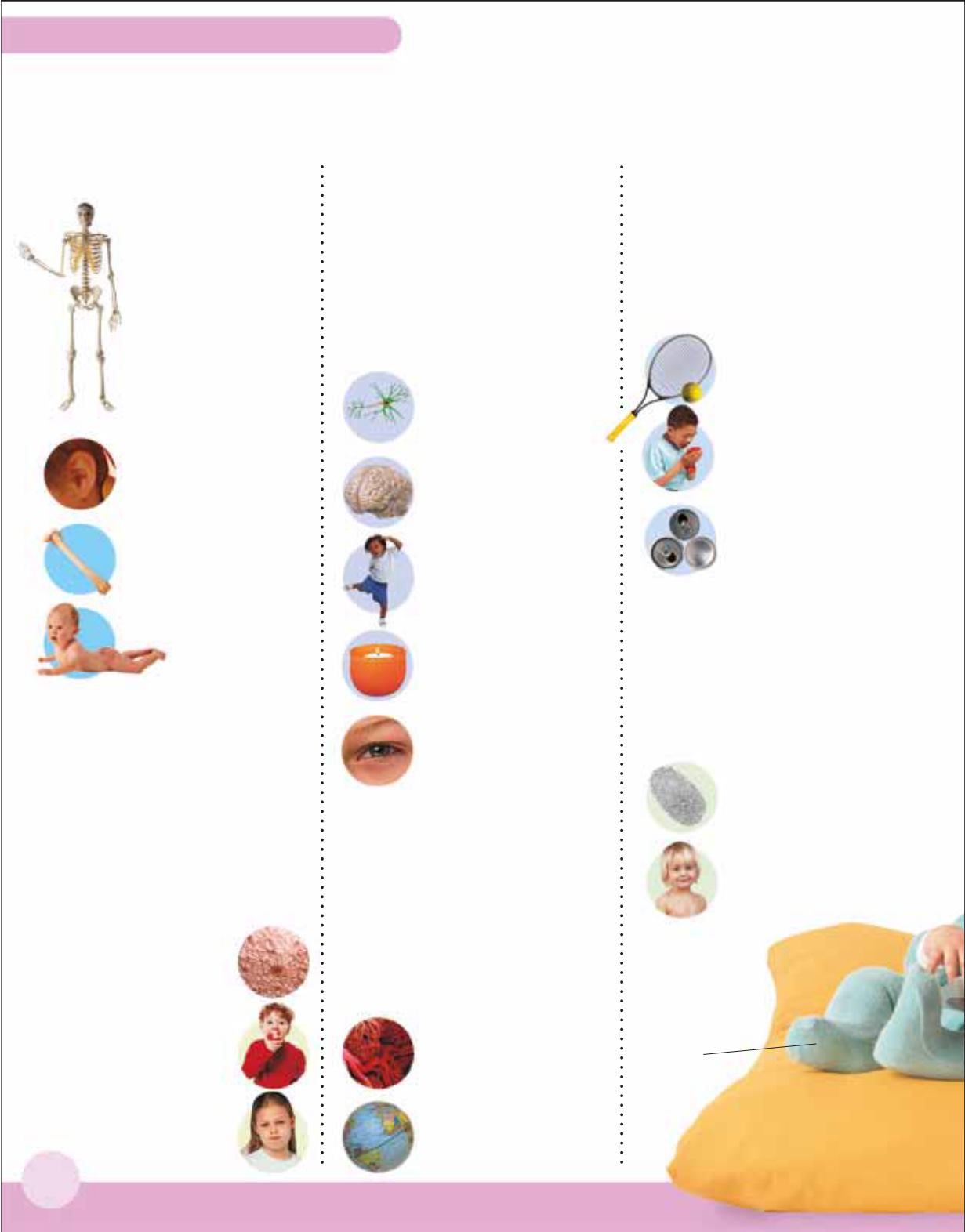
Amazing facts about YOU!
Human body
120
Your smallest bone is the
stapes in your ear, which
is smaller than a rice grain.
Weight for weight, bones
are stronger than steel
or concrete.
A baby has more than
300 bones but adults
have only 206.
Every hair in your body
has a tiny muscle that
can pull it upright.
Your strongest muscle is
the masseter (jaw muscle),
which closes your mouth.
You use more muscles
when you frown than
when you smile.
Every four years you
shed your own body
weight in dead skin.
You have about 5 million
hairs, but only 100,000
are on your head.
The inside of your
lungs is as big as a
third of a tennis court.
The fastest recorded
sneeze reached 167 kph
(104 mph).
In one day you breathe in
enough air to fill 33,000
drink cans.
Skeleton
and bones
Without a
skeleton to hold
you up, you’d
collapse on the
ground like a
heap of jelly.
Breathing
Lungs take air into
your body so that
life-giving oxygen can
enter your blood.
Skin, nails, and hair
The tough, protective
surface of your body
is almost entirely dead.
Nerves carry signals
at up to 400 kph
(250 mph).
Your brain is made of
about 100 billion tiny
cells called neurons.
The left side of your brain
controls the right side of
your body and vice versa.
The human eye can see a
candle flame at night from
1.6 km (1 mile) away.
When you’re bored, the
pupils in your eyes get
smaller.
Muscles and
movement
Muscles move your
body by pulling bones.
You use hundreds of
them when you walk.
Your smallest blood
vessels are ten times
thinner than a hair.
Your body contains
enough blood vessels to
circle the world twice.
Heart and blood
Your heart pumps
blood around your
body. It works nonstop
without getting tired.
Brain and nerves
Your brain is the
body’s control centre.
Signals zoom to and
from the brain
along your nerves.
The thickest
skin on your
body is on the
soles of your
feet.


